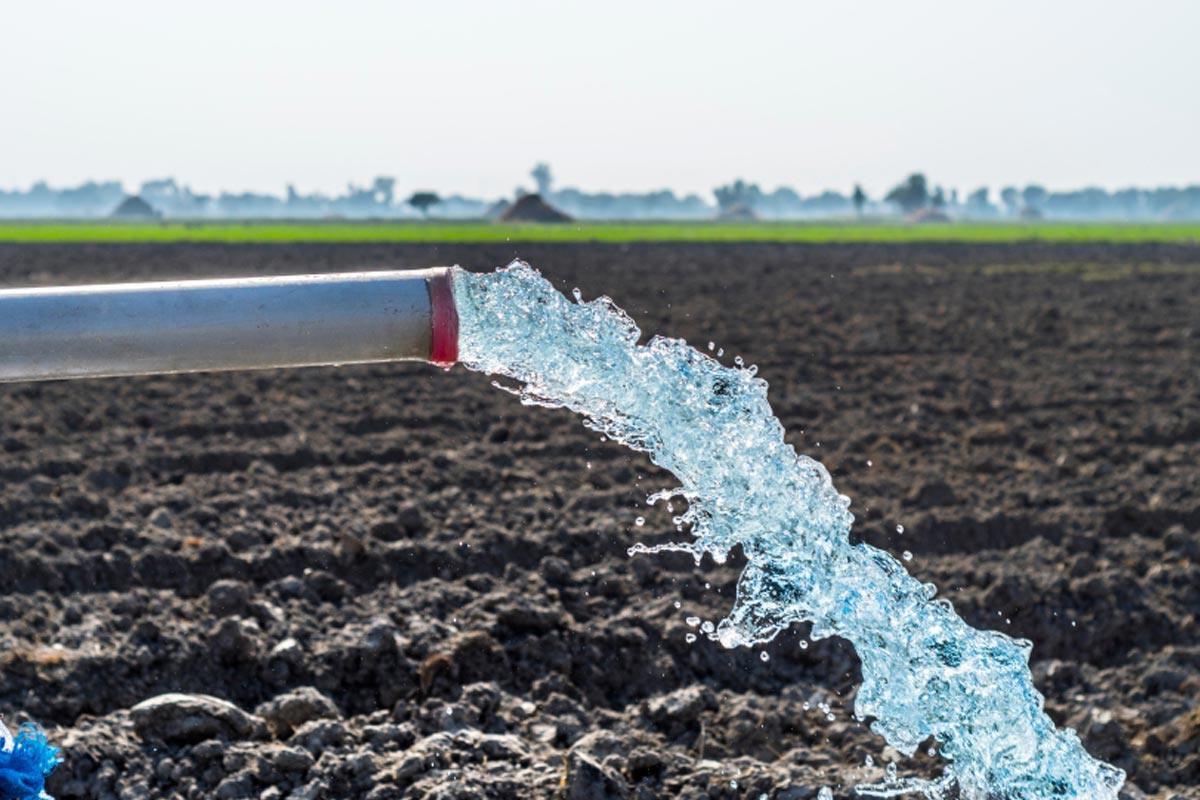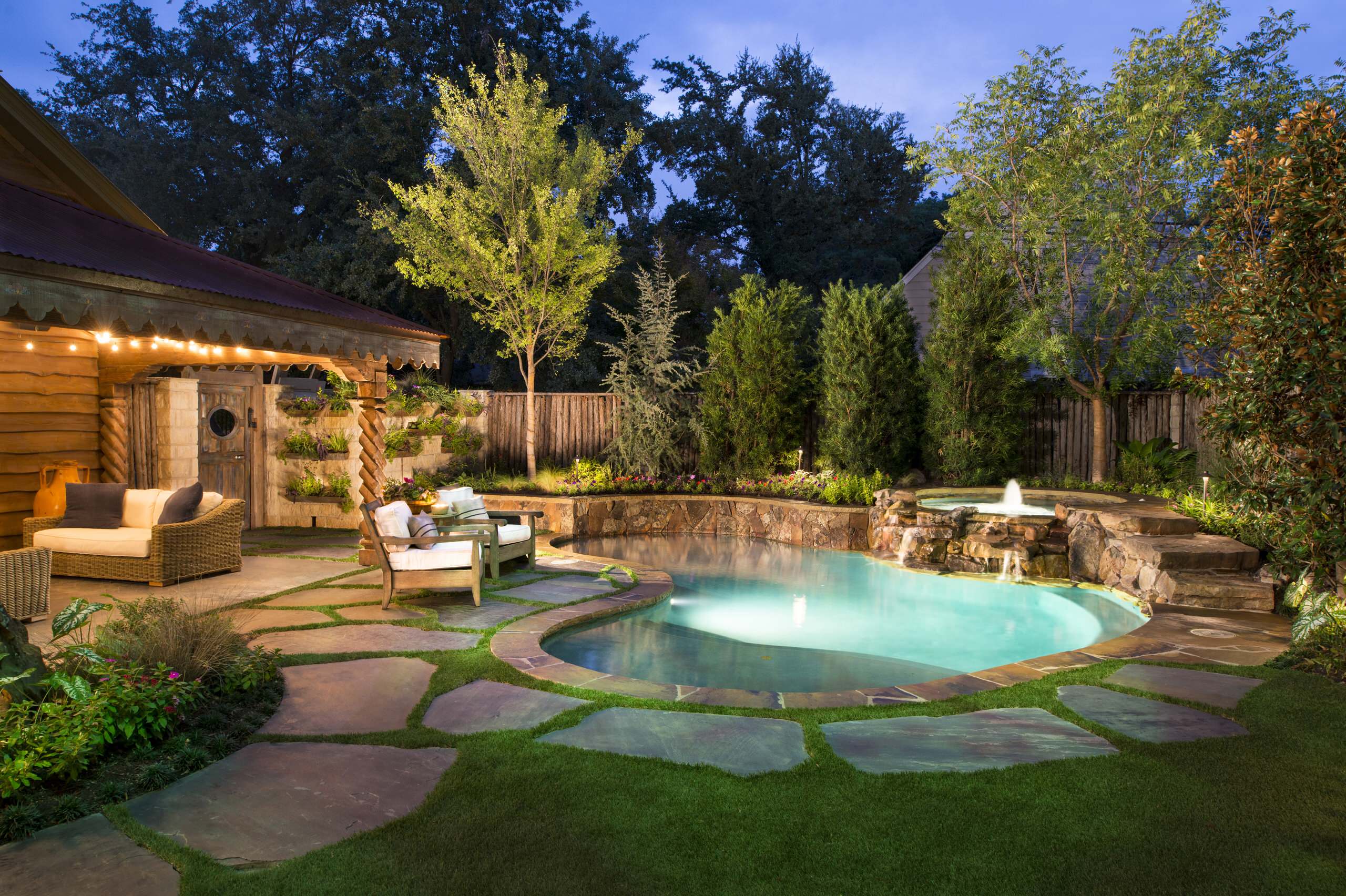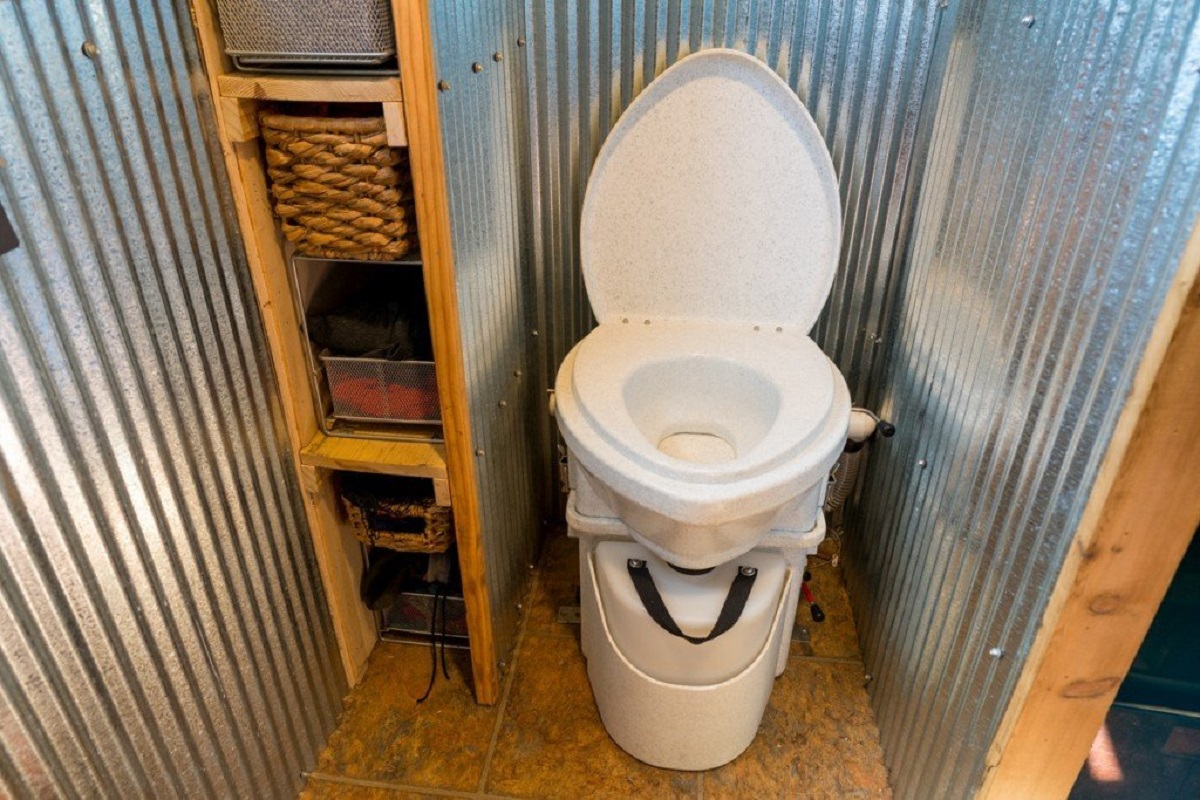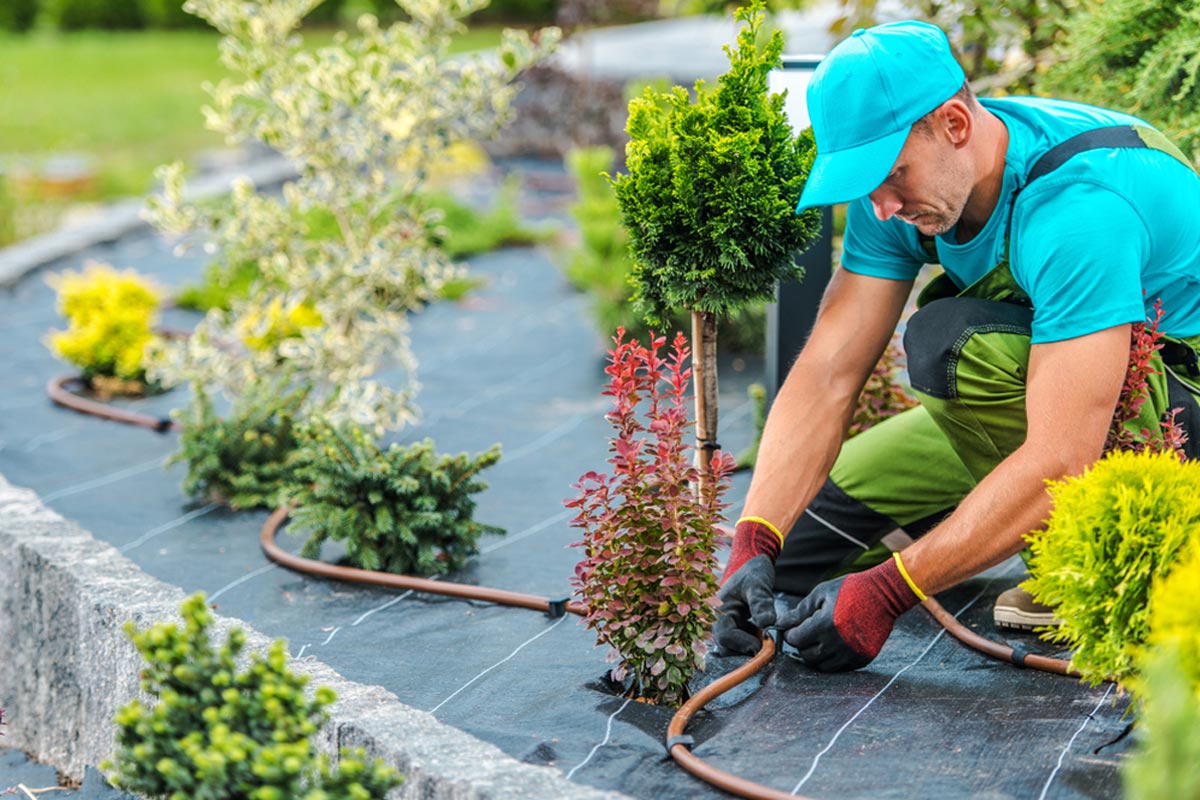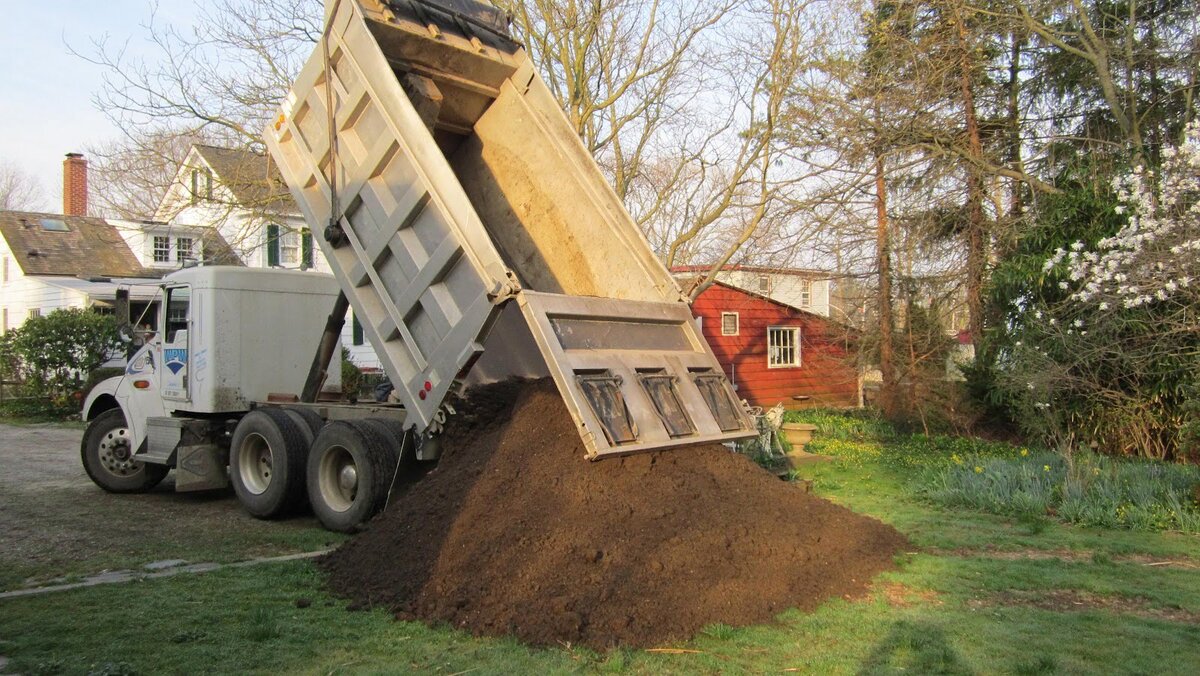Home>Garden Design>How Much Does It Cost To Put Pavers In Backyard
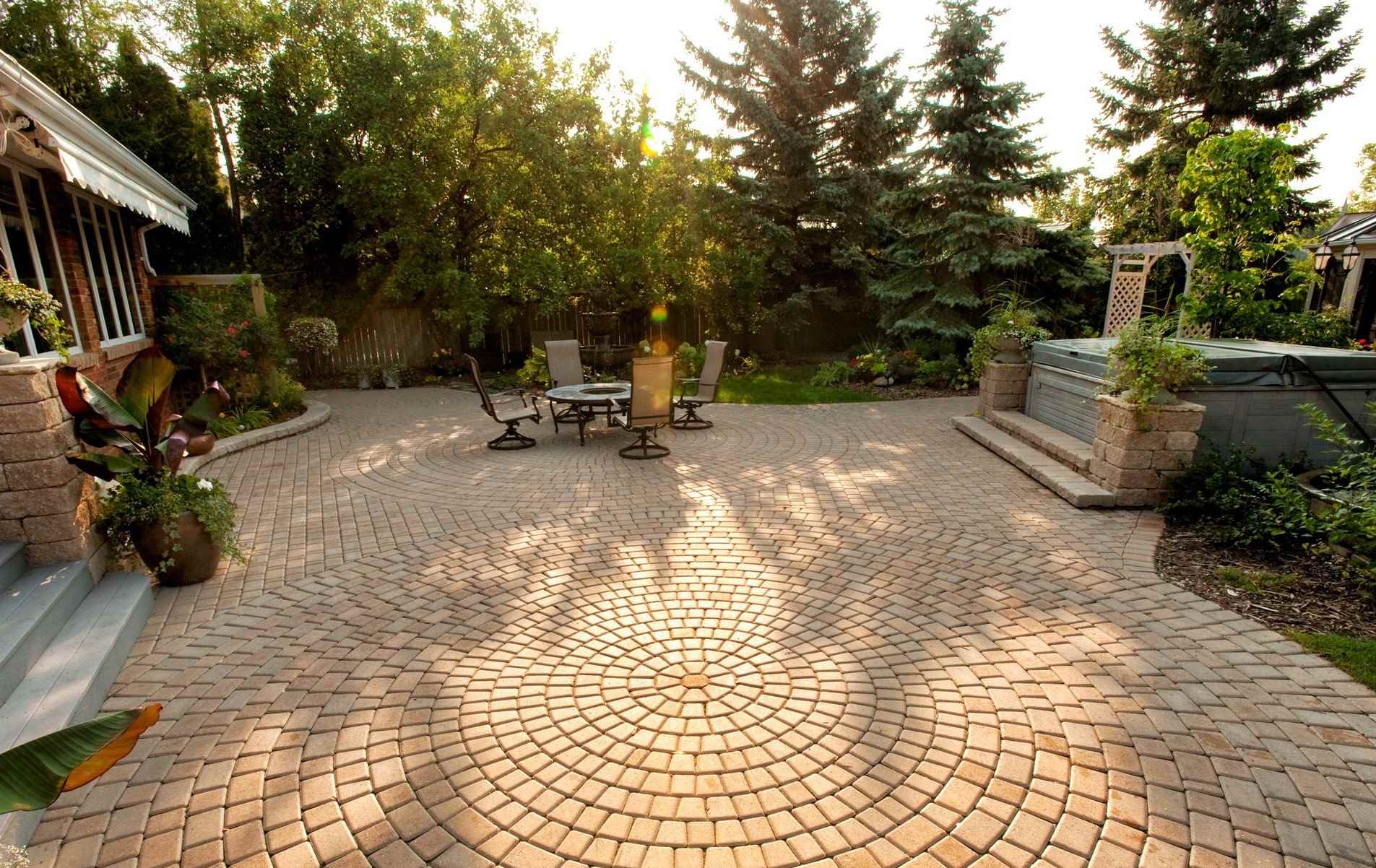

Garden Design
How Much Does It Cost To Put Pavers In Backyard
Published: August 5, 2023
Get an estimate for the cost of landscape design with pavers in your backyard. Transform your outdoor space with beautiful and durable pavers.
(Many of the links in this article redirect to a specific reviewed product. Your purchase of these products through affiliate links helps to generate commission for Chicagolandgardening.com, at no extra cost. Learn more)
Table of Contents
Introduction
Welcome to the wonderful world of landscape design! Creating a beautiful outdoor space can greatly enhance the aesthetics and functionality of your home, and one popular feature that can transform your backyard is the installation of pavers. Pavers not only add structure, but they also provide a durable and versatile surface for various outdoor activities.
However, before diving into the exciting process of paver installation, it is important to understand the cost implications involved. The cost of putting pavers in your backyard can vary depending on a variety of factors, including the size and complexity of the project, the choice of materials, and labor fees. In this article, we will explore the different elements that can impact the overall cost of installing pavers, allowing you to plan and budget your backyard project effectively.
From planning and design to material selection and labor expenses, there are several factors to consider when estimating the cost of installing pavers. By understanding these factors, you can make informed decisions and ensure that your backyard transformation aligns with your budget and objectives.
So, let’s delve into the various aspects that affect the cost of installing pavers in your backyard. Whether you’re envisioning a tranquil patio retreat or a stunning walkway, understanding the financial considerations will help you embark on your paver installation project with confidence and clarity.
Factors Affecting the Cost of Installing Pavers
When it comes to installing pavers in your backyard, several key factors can influence the overall cost of the project. By taking these factors into consideration, you can better understand how they may affect your budget and make informed decisions. Let’s explore the main factors that can impact the cost of installing pavers:
- Size and complexity of the project: The size and complexity of your paver installation project play a significant role in determining the cost. Larger projects or those with intricate designs may require more materials, labor, and time, resulting in a higher overall cost.
- Choice of materials: The type and quality of the paver materials you choose can greatly affect the cost. There is a wide range of options available, from basic concrete pavers to premium natural stone. Each option comes with its own price point, and the cost can increase depending on the size, color, and texture of the pavers you select.
- Labor fees: The labor fees associated with paver installation can vary depending on factors such as location, local market rates, and the complexity of the project. Labor costs typically include excavation, preparation of the base, installation of pavers, and any additional features or patterns requested.
- Site preparation: The condition of the area where the pavers will be installed also affects the cost. If the site requires extensive excavation, leveling, or the removal of existing structures, it will add to the overall cost. Additionally, factors such as accessibility and the need for drainage solutions can impact the budget.
- Additional features: Extras such as edging, lighting, and seating areas can enhance the functionality and aesthetics of your paver installation but will add to the overall cost. These features not only require additional materials but also increase the labor and time needed to complete the project.
It is important to note that these factors are interrelated, and changes in one aspect can have a ripple effect on the others. For example, choosing a more expensive type of paver may require adjustments to the budget for labor and additional materials.
By carefully considering these factors and conducting thorough research, you can gain a clearer understanding of the costs associated with your paver installation project. This will enable you to plan and budget effectively, ensuring that your vision for the perfect backyard becomes a reality.
Planning and Design Costs
Before diving into the physical installation of pavers in your backyard, it is essential to invest time and resources in the planning and design phase. This step is crucial for creating a well-thought-out outdoor space that meets your needs and fits within your budget.
The cost of planning and design can vary depending on the complexity of your project and whether you choose to hire a professional or tackle the design process yourself. Here are some factors to consider when estimating planning and design costs:
- Hiring a professional: If you’re looking for a seamless and professional design process, hiring a landscape architect or designer is a great option. Their expertise and creativity can elevate your backyard design while considering factors like functionality, aesthetics, and budget. However, keep in mind that professional design services come at a cost, typically ranging from $500 to several thousand dollars, depending on the scale of the project.
- Software or design tools: If you prefer a more hands-on approach, there are various software programs and online design tools available that can help you create your backyard layout. These tools often come with a fee or a subscription, but they offer the flexibility to experiment with different design ideas and visualize how your paver installation will look once completed.
- Site analysis and measurements: Before finalizing your paver design, conducting a site analysis and accurate measurements is essential. This may involve hiring a surveyor or using professional tools to ensure precise measurements and identify any potential challenges or limitations.
Investing in the planning and design phase can save you time, money, and headaches down the road. It allows you to visualize your project, make adjustments before construction begins, and communicate your ideas effectively to contractors or suppliers.
Remember, the cost of planning and design is a worthwhile investment, as it sets the foundation for a successful paver installation that aligns with your vision and budget. Take your time in this phase, consider all aspects of your design, and consult professionals if needed to ensure optimal results.
Material Costs
The choice of materials for your paver installation project will significantly impact the overall cost. There is a wide range of materials available, each with its own characteristics, durability, and price point. Here are the key factors to consider when estimating material costs:
- Type of pavers: The type of pavers you choose will be a significant factor in determining the material costs. Concrete pavers are a popular and affordable option, while natural stone pavers, such as granite or travertine, tend to be more expensive. Additionally, specialized pavers, like interlocking or permeable pavers, may also come at a higher price.
- Size and shape: Pavers come in various sizes and shapes, and the choice you make can impact the material costs. Larger and irregularly shaped pavers generally cost more than standard-sized ones due to the increased material required and the complexity of installation.
- Color and finish: Pavers are available in a wide array of colors and finishes, which can affect their cost. Basic, neutral-colored pavers tend to be more cost-effective, while premium or custom-colored pavers may come at a higher price.
- Quantity: Calculating the quantity of pavers needed is crucial to estimating material costs accurately. By measuring the area to be paved and factoring in waste or overage, you can determine the exact quantity required and purchase accordingly. Keep in mind that buying in bulk can often result in cost savings.
- Additional materials: There are various additional materials involved in paver installation, including base material like gravel or sand, edging materials, and jointing materials like sand or polymeric sand. These additional materials contribute to the overall material costs and should be factored into your budget.
It is important to strike a balance between your desired aesthetics, durability, and the budget you have allocated for materials. Research different options, compare prices from different suppliers, and consider the long-term maintenance and lifespan of the chosen materials to make an informed decision.
Keep in mind that material costs may vary depending on your location and the availability of certain materials. Additionally, considering factors like the climate and intended use of the paver installation can help you choose materials that are suitable for your specific needs.
By carefully considering the above factors and consulting with professionals or suppliers, you can estimate and plan your material costs accurately, ensuring a successful paver installation project within your budget.
Labor Costs
The cost of labor is a significant factor to consider when budgeting for your paver installation project. Labor costs will vary depending on factors such as the complexity of the project, local market rates, and the experience and expertise of the professionals you hire. Here are key considerations regarding labor costs:
- Hiring professionals: Hiring experienced and skilled paver installation professionals is crucial for a successful project. While the cost of labor may be higher when working with professionals, their expertise can ensure a high-quality and efficient installation process. It is essential to obtain quotes from multiple contractors, compare their prices, and consider their reputation and portfolio before making a decision.
- Project complexity: The complexity of your paver installation project will impact the labor costs. Projects that involve intricate designs, special features, or multiple areas for installation may require more time and effort. As a result, the labor costs may be higher compared to simpler projects.
- Site preparation: The preparation work necessary before laying the pavers can significantly affect labor costs. Tasks such as excavation, leveling the ground, and ensuring proper drainage require time and effort. If the site has existing structures or plants that need to be removed, additional labor costs may be incurred.
- Installation specifics: Factors such as the pattern, edge detailing, and any additional features requested will affect labor costs. More complex patterns or intricate detailing will require more precision and time, leading to higher labor costs. Similarly, additional features like borders, curves, or steps will also require additional labor to install.
- Seasonal considerations: Labor costs may fluctuate depending on the season and demand for paver installation services. In high-demand seasons, such as spring or summer, labor costs can be higher. It is advisable to plan and schedule your project during an off-peak season if possible to potentially save on labor costs.
When estimating labor costs, it is essential to clearly communicate your expectations to the professionals and ensure that the scope of work is well-defined. Obtain detailed quotes and contracts that outline the specific tasks to be performed, duration of the project, and any additional costs that may arise during the installation process.
Remember, hiring reliable and experienced professionals is essential for the success of your paver installation project. While labor costs may constitute a significant portion of your budget, investing in skilled labor is worthwhile to ensure a beautiful and long-lasting result.
Equipment and Tool Costs
When it comes to installing pavers in your backyard, having the right equipment and tools is essential. While hiring a professional contractor typically includes the cost of equipment and tools in their labor fees, if you decide to take on the project yourself, it’s important to consider the equipment and tool costs. Here are some key points to keep in mind:
- Paver installation tools: Depending on the scope of your project, you may need a variety of tools to properly install the pavers. These tools can include a shovel, rake, tamper, mallet, level, chalk line, and a variety of hand tools for cutting and shaping pavers. The costs of these tools can vary, so it’s important to research prices and determine which tools you will need for your specific project.
- Excavation and grading equipment: If your project requires extensive excavation or grading, you may need to rent or purchase equipment such as a compact excavator, skid-steer loader, or grading equipment. The rental or purchase costs of these larger equipment pieces should be factored into your budget.
- Equipment rental costs: If you only need certain equipment for a short period, renting may be a more cost-effective option than purchasing. Equipment rental costs can vary depending on the duration of the rental and the type of equipment needed.
- Delivery and transportation: In addition to the equipment costs, consider any delivery or transportation fees associated with getting the equipment and tools to your project site. These fees can vary depending on the distance and rental company policies.
- Maintenance and cleaning: It’s important to properly maintain and clean your equipment and tools throughout the project to ensure their longevity and optimal performance. This may include the cost of cleaning supplies, replacement parts, or professional maintenance services.
Before starting your project, create a comprehensive list of the tools and equipment you will need. Research prices from local suppliers or rental companies to get an estimate of the costs involved. Additionally, consider borrowing tools from friends or family who may have what you need to help reduce expenses.
Remember to prioritize safety when using equipment and tools. Familiarize yourself with proper usage instructions and wear appropriate safety gear to prevent accidents or injuries. If you are unsure about operating certain equipment, it’s best to consult a professional or hire a contractor for that specific task.
By accounting for equipment and tool costs in your budget and ensuring you have everything you need in advance, you can proceed with your paver installation project confidently and efficiently.
Additional Costs
When budgeting for your paver installation project, it’s important to consider additional costs that may arise beyond the core materials, labor, and equipment. These additional costs can vary depending on the specifics of your project and any additional features or considerations you choose to include. Here are some common additional costs to keep in mind:
- Permits and approvals: Depending on your location and the regulations in your area, you may need to obtain permits or approvals before starting your paver installation project. These permits may come with associated fees that you will need to include in your budget.
- Landscaping and site restoration: Once the pavers are installed, you may need to budget for landscaping and site restoration, especially if the construction process has caused any disruption to the surrounding area. This can include activities such as reseeding, replanting, or adding landscaping elements like plants, trees, or irrigation systems.
- Maintenance and repairs: Paver installations require regular maintenance to keep them looking their best and ensure their longevity. Budgeting for regular maintenance tasks such as cleaning, sealing, and re-leveling is important to preserve the appearance and integrity of your pavers. Additionally, unexpected repairs may arise in the future, so it’s wise to set aside some funds for potential repairs.
- Professional consultations: Depending on the complexity of your project, you may need to consult with professionals such as landscape architects, engineers, or geotechnical experts to ensure proper project planning or troubleshoot any challenges that arise. These consultations may come at an additional cost but can provide valuable insights and guidance for your project.
- Utility relocations: If your project involves paver installation in areas where utilities such as water lines, electrical wires, or gas lines are present, you may need to consider the cost of relocating these utilities to accommodate the installation. It is important to consult with utility companies and budget for any necessary relocations.
Be proactive in researching and identifying any potential additional costs specific to your project. This will help you establish a realistic budget and avoid any surprises along the way. Remember, it’s better to include an allowance for unforeseen expenses to ensure you are adequately prepared for any unexpected costs that may arise.
By accounting for these additional costs in your budget, you can ensure a more accurate estimation of the total project cost and avoid any financial setbacks during the paver installation process.
Cost-saving Tips
While the cost of installing pavers in your backyard can add up, there are several strategies you can employ to help save money and stay within your budget. By being strategic in your approach, you can achieve a beautiful and functional paver installation without breaking the bank. Here are some cost-saving tips to consider:
- Do your research: Take the time to research and compare prices for materials, tools, and equipment from different suppliers. Look out for sales or discounts that may be available, allowing you to get quality products at a lower cost.
- Consider alternative materials: While natural stone pavers may be visually appealing, they tend to be more expensive. Opting for concrete pavers or other cost-effective materials can offer significant savings without compromising on quality or aesthetics.
- Choose a simpler design: Elaborate patterns or intricate designs can not only increase the cost of materials but also add to labor expenses. Consider simpler designs or standard patterns that are easier and quicker to install while still providing a visually pleasing result.
- Do-it-yourself (DIY) where possible: Tackling certain aspects of the project yourself can help save on labor costs. While it’s crucial to know your limits and safety requirements, simple tasks like site preparation, cleaning, or minor repairs can be accomplished by DIY efforts.
- Optimize material usage: Plan your paver layout carefully to minimize material waste. By doing proper calculations and measurements, you can optimize material usage, reducing the need for excess pavers or additional trips to purchase more materials.
- Consider used or reclaimed materials: If you’re open to it, consider using used or reclaimed pavers. These can often be sourced at a lower cost or even obtained for free from local classifieds, salvage yards, or online marketplaces. Just ensure that the quality and condition of the materials are suitable for your project.
- Group similar projects together: If you have multiple outdoor projects in mind, consider completing them together to save on labor and equipment costs. For example, combining your paver installation with other landscaping projects or outdoor renovations can lead to cost efficiencies.
- Maintain your pavers: Regular maintenance and proper care can extend the lifespan of your pavers, reducing the need for premature repairs or replacements. Follow recommended maintenance practices, such as sealing and cleaning, to keep your pavers in good condition for years to come.
Remember, cost-saving doesn’t mean compromising on quality. By implementing these tips, you can make informed decisions, prioritize your budget, and achieve a stunning paver installation within your financial means.
Lastly, it’s important to weigh the cost-saving measures against your specific project requirements and goals. Consulting with professionals, such as contractors or landscape designers, can provide valuable insights and guidance tailored to your project, assisting you in making cost-effective choices throughout the process.
Conclusion
Installing pavers in your backyard is a fantastic way to enhance the beauty and functionality of your outdoor space. However, it is important to consider the various cost factors associated with this project to ensure that it aligns with your budget and objectives.
Throughout this article, we have explored the factors that can influence the cost of installing pavers, including the size and complexity of the project, the choice of materials, labor fees, equipment and tool costs, and additional expenses. By understanding these factors and considering cost-saving tips, you can make informed decisions and plan your paver installation project effectively.
Effective planning and design, along with careful consideration of material options, can help you strike the right balance between aesthetics, functionality, and budget. Hiring skilled professionals or taking on DIY aspects of the project can also impact labor costs. Additionally, optimizing material usage, researching prices, and considering alternatives can contribute to significant cost savings.
Remember to account for additional costs, such as permits, landscaping, maintenance, and professional consultations, to create a realistic budget that encompasses all aspects of your project. By doing so, you can avoid financial surprises and ensure a successful paver installation that meets your expectations.
In conclusion, while installing pavers in your backyard may involve some upfront costs, the long-term benefits in terms of aesthetics, durability, and increased property value make it a worthwhile investment. With careful planning, budgeting, and consideration of the factors discussed in this article, you can embark on your paver installation project with confidence, knowing that you are making informed decisions that align with your vision and financial means.

